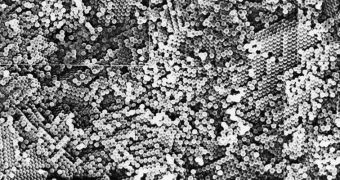A collaboration between two institutions at the US Department of Energy's (DOE) Argonne National Laboratory (ANL) recently managed to produce the most detailed images of nanoparticle crystallization taking place in real time. Physicists from the Advanced Photon Source (APS) worked together with colleagues from the Center for Nanoscale Materials to observe this extremely important process as it was unfolding. Understanding how particles form at the nanoscale is critical for the development of new technologies, in medicine, the electronics industry, and other areas of science.
One of the main problems plaguing the field of nanotechnology today is the fact that experts don't really know how nanoparticles will turn out in a solution until after they are produced. “Nanoscience is a hot issue right now, and people are trying to create self-assembled nanoparticle arrays for data and memory storage. In these devices, the degree of ordering is an important factor,” explains Zhang Jiang, who is an assistant physicist at the ANL. In the future, data that will be inscribed on nanostructures will be located in a two-dimensional crystal lattice that will feature well-defined graphical coordinates, like hard drives do today.
Recalling bits of data is entirely dependent on how these coordinates are allotted and remembered. In the nanoscale world, errors occur fairly often, on account of the uncertainties associated with the manufacturing process. “Defects in a lattice are like potholes on a road. When you're driving on the highway, you would like to know whether it is going to be a smooth ride or if you will have to zigzag in order to avoid a flat tire. Also, you want to know how the potholes form in the first place, so we can eliminate them,” says Jin Wang, who is a physicist at the ANL too. He reveals that controlling just how ordered particles emerge in a solution is a goal that has remained elusive for a long time.
“We can routinely produce 10^14 particles in a few droplets of solution. That is more than the number of stars in the Milky Way Galaxy. To find conditions under which nanoparticles can self-assemble into a crystal lattice with a low number of defects is quite challenging,” adds ANL nanotechnology expert Xiao-Min Lin. “With local ordering, one cannot assume the same order exists throughout the whole structure; it's like seeing a section of road and assuming it is straight and well constructed all the way to the end,” Wang says. With the new viewing method, “we can probe the entire macroscopic sample and monitor what's happening in real time. This allows us to understand what parameters are important to control the self-assembly process,” Jiang concludes.

 14 DAY TRIAL //
14 DAY TRIAL //